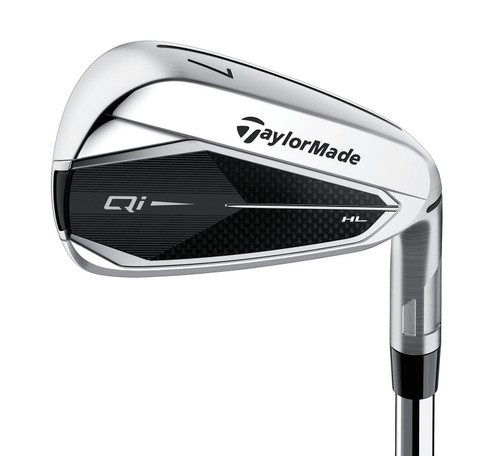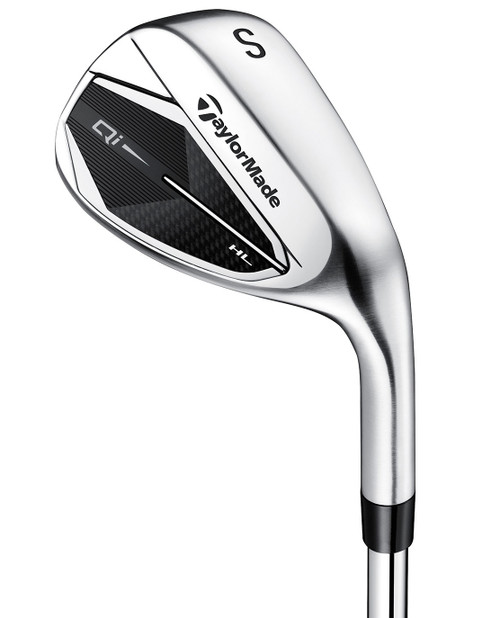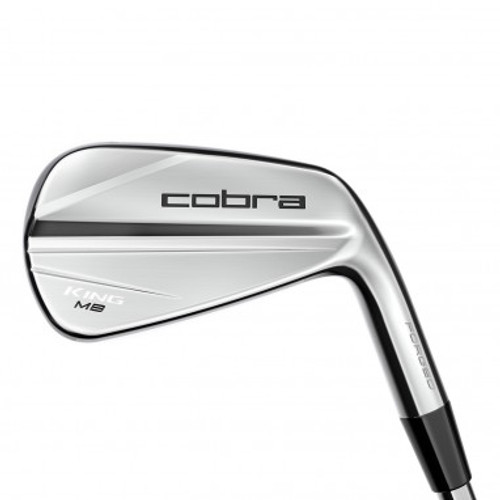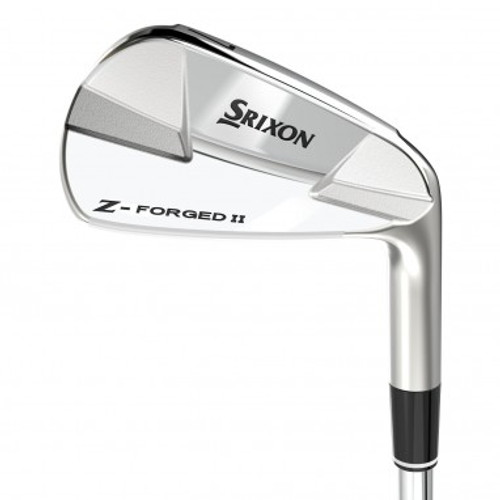Steel vs Graphite Shafts: A Complete Guide
Deciding whether to purchase a set of irons with steel or graphite shafts can be confusing for any golfer. In this guide, Golf Support will explore the differences between steel and graphite shafts, their respective benefits and drawbacks, and provide guidance on selecting the right shaft for your game and progression when out on the course.
What is a steel shaft in golf?

Steel shaft irons are typically made using either carbon steel or stainless steel. Carbon steel shafts are more commonly used due to their optimal combination of strength and weight. However, stainless steel shafts offer increased durability and resistance to rust and corrosion.
What are the characteristics of steel shafts?
Steel shafts are known for their rigidity and stability. They have less flex compared to graphite shafts and offer a more solid and controlled feel during the swing. The stiffness of a steel shaft often translates into increased accuracy and precision at higher swing speeds.
What are the benefits of steel shafts?
Steel shafts provide several benefits to any golfer. We have summarised some of the key benefits below:
Enhanced control and accuracy
Steel shafts are favoured by players who prioritise control over distance. The stiffer nature of steel allows for a more consistent swing, reducing the risk of excessive clubhead movement that improves accuracy.
Improved feedback and feel
Steel shafts provide a direct transfer of energy and feedback to the golfer's hands. This solid and responsive feel allows players to better sense the impact and make necessary adjustments to their swing.
Increased durability and resistance
Steel shafts are highly durable and resistant to wear and tear. They can withstand the rigours of constant practice and play, making them a long-lasting option for avid golfers.
Affordability
In general, steel shafts tend to be more budget-friendly compared to graphite shafts. This cost-effectiveness makes them a popular choice for golfers looking for high-quality performance at a more accessible price.
Popular steel shafted irons
What is a graphite shaft?
Graphite shaft irons are constructed using layers of carbon fibre and resin materials. The carbon fibre provides strength and stability and the resin helps bind the layers together. The use of these lightweight materials distinguishes graphite shafts from their steel counterparts.
What are the characteristics of a graphite shaft?
Graphite shafts are light and flexible, resulting in increased clubhead speed and the potential for greater distance. The higher torque of a graphite shaft allows for shot-making versatility and the ability to shape shots. Additionally, graphite shafts tend to produce a high ball flight trajectory, contributing to longer carry distances. However, it's important to note that graphite shafts may provide less control and accuracy compared to steel shafts.
The benefits of graphite shafts
Graphite shafts provide several benefits to any golfer. We have summarised some of the key benefits below:
Enhanced distance and trajectory
With a graphite shaft, the combination of lighter weight and increased clubhead speed often translates into greater distance. The ability to generate higher launch angles can also contribute to improved carry and overall distance.
Reduced vibrations and shock transmission
Graphite shafts dampen vibrations more effectively than steel shafts. The reduction in vibrations can result in a smoother feel at impact, providing a more comfortable experience for any golfer, especially those with sensitive joints or arms sensitivity.
Reduced fatigue
The reduced weight of a graphite shaft can help minimise fatigue during long rounds or practice sessions. This enables golfers to maintain consistency and performance throughout their game.
Potential for customisation
Graphite shafts offer various customisation options that allow golfers to tailor their equipment to their specific needs. With options such as flex variations, weight selections, torque ratings, kick points, and shaft lengths, golfers can fine-tune their graphite shafts to optimise performance. At Golfsupport, we provide a custom-fit golf club service for anyone who wants to maximise their game.
Popular Graphite Shafted Irons
Graphite vs Steel Shafts: What are the differences?
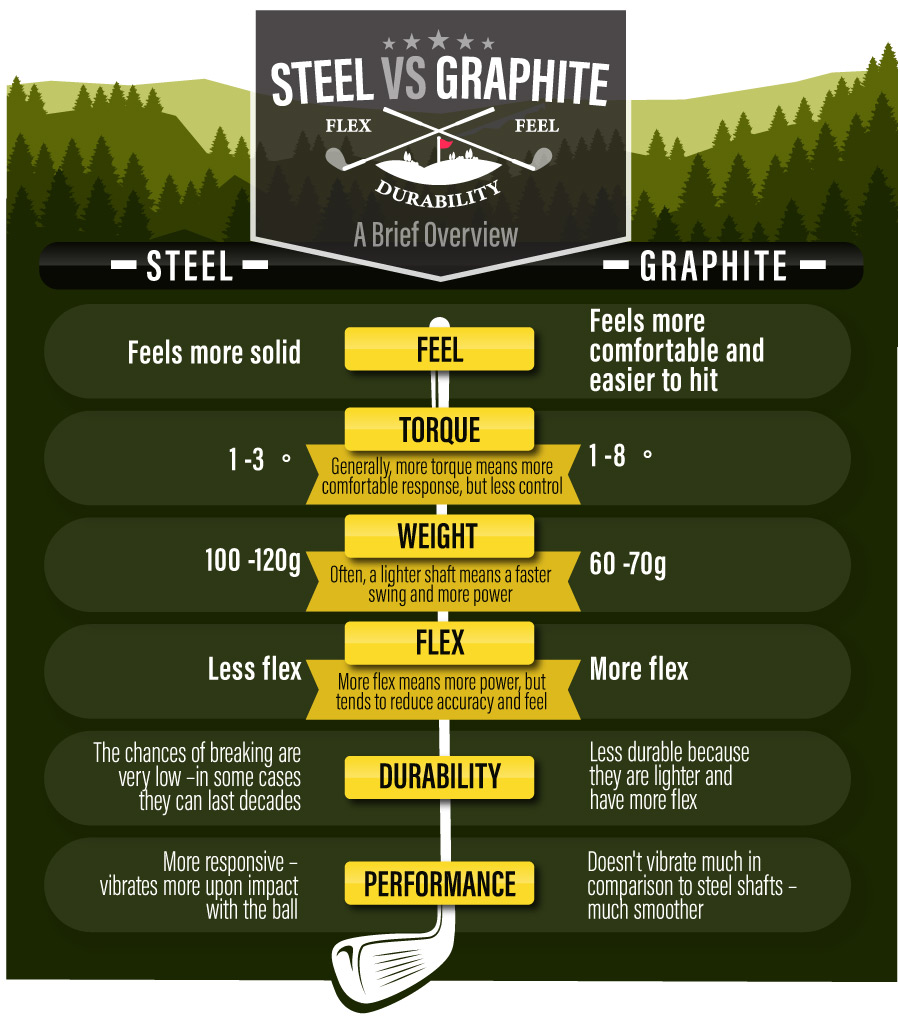
Most clubs will have been originally assembled with either a steel or graphite shaft but what are the differences between steel and graphite?
Weight
Steel shafts are generally heavier than graphite shafts. The weight of the shaft can affect your swing and the overall feel of the club. Steel shafts offer a more solid and stable feel during the swing. Graphite shafts are lighter and can help increase clubhead speed, potentially leading to greater distance. This is often a factor in shaft choice for senior and female golfers who can achieve more clubhead speed with graphite shafts.
Flexibility
Graphite shafts are typically more flexible than steel shafts. The flex of the shaft affects the timing, trajectory, and feel of your shots.
Graphite shafts provide more whip and can generate greater clubhead speed, resulting in increased distance potential. Steel shafts, with less flexibility, offer more control and precision that can be beneficial for accuracy and shot shaping.
Vibration Dampening
Graphite shafts have better vibration-dampening properties compared to steel shafts. This can provide a softer and more comfortable feel at impact, reducing the risk of potential discomfort or fatigue during extended play. Steel shafts, being stiffer, may transmit more vibrations to the player's hands.
Shot Trajectory
Graphite shafts tend to produce a higher ball flight trajectory compared to steel shafts. This higher launch angle can be advantageous in achieving longer carry distances as it allows the ball to stay in the air for a longer period.
Steel shafts generally produce a lower ball flight trajectory, which can be beneficial in managing windy conditions and achieving a more penetrating ball flight.
Control and Accuracy
Steel shafts are known for their superior control and accuracy. The stiffer nature of steel shafts allows for a more consistent and precise swing, reducing the risk of excessive clubhead movement. This can be particularly advantageous for golfers who prioritise accuracy and shot shaping.
Graphite shafts, while offering distance potential, may require adjustments in swing mechanics to maintain control and accuracy.
Swing Speed
Graphite shafts are generally recommended for golfers with slower swing speeds, as they can help generate more clubhead speed and distance.
Steel shafts, with their heavier weight and stiffer profile, are favoured by golfers with faster swing speeds, as they can provide better control and stability.
Cost
Graphite shafts tend to be more expensive than steel shafts due to the materials and manufacturing processes involved. The price difference varies depending on brand, model, and other factors.

Steel vs Graphite Shafts: In summary
Choosing between steel and graphite shafts is an important decision that can significantly impact your performance on the golf course.
To summarise, steel shafts offer excellent control, accuracy, and a firmer feel and are favoured by golfers who prioritise shot shaping and precision. With their heavier weight and stiffer profile, steel shafts provide stability throughout the swing and transmit valuable feedback on shot quality and impact. They are particularly well-suited for golfers with faster swing speeds and those looking for a consistent and controlled ball flight.
On the other hand, graphite shafts excel in generating club head speed, distance, and a higher ball flight. They are often recommended for golfers with slower swing speeds or those seeking forgiveness and increased carry distances. Graphite shafts have vibration-dampening properties, providing a softer feel at impact and reducing potential discomfort or fatigue during play. They offer the potential for customisation, with various flex options to suit individual swing characteristics.
When comparing steel and graphite shafts, it's crucial to consider factors such as skill level, playing style, swing characteristics, desired shot trajectory, feel, feedback, and the overall makeup of your club set. Consulting with a professional club fitter or golf instructor can provide valuable insights and personalised recommendations based on your specific needs.
Ultimately, the choice between steel and graphite shafts boils down to your individual preferences and goals on the golf course. Whether you prioritise control and precision or seek distance and forgiveness, there is a shaft type that suits your game. Selecting the right shaft can enhance your overall performance and enjoyment of the game, allowing you to play with confidence and achieve your desired results.
When selecting your shaft, take the time to evaluate your game and assess the characteristics of each shaft type to make an informed decision. With the right choice, you'll be equipped with a set of clubs that complement your swing and help you unlock your full potential on the golf course.
If you have any questions, feel free to get in touch with our expert team – we are more than happy to assist you with any queries you may have.










